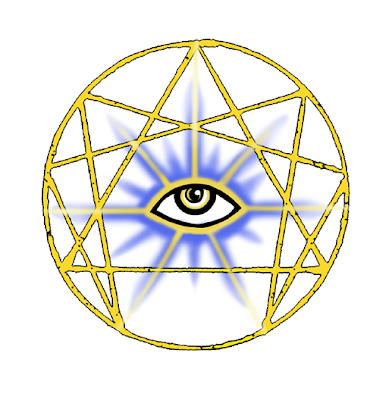What is the Enneagram?
The Enneagram is a system that attempts to define and describe nine basic personality types, or aspects of human nature, and their complex interrelationships. It focuses on finding patterns among the many behaviors and habits of people and their interpersonal interactions. The Enneagram can be a powerful tool for self-actualization, understanding, and personal growth--a sort of “self-spirituality” to help us shed light on the questions of Who We Are and Why We Are Here.
The Enneagram is a system that attempts to define and describe nine basic personality types, or aspects of human nature, and their complex interrelationships. It focuses on finding patterns among the many behaviors and habits of people and their interpersonal interactions. The Enneagram can be a powerful tool for self-actualization, understanding, and personal growth--a sort of “self-spirituality” to help us shed light on the questions of Who We Are and Why We Are Here.
We all have certain habits and traits that work together as a “filter” through which we understand ourselves and the world around us. Our self-expression, our defenses, our fears, our desires, how we learn, how we deal with our past and think about our future--all of these are colored greatly by our personality type.
About the Enneagram:
The Enneagram can be described as “psycho-spiritual”, meaning it has relevance and appeal to people approaching it from either a scientific or a metaphysical perspective. Some critics claim that the Enneagram is less specific/rigid than other personality awareness systems such as the Meyers-Briggs Type Indicator (MBTI), and therefore invalid. However, the Enneagram does not attempt to put you into a box--rather, it is a tool that helps you to become aware of the box (or boxes!) that you’re already in, and thus, discover the way out.
The Enneagram (say “ANY-a-gram”) of personality type is a synthesis of various spiritual traditions, including Eastern Orthodox Christianity, Buddhism, Sufi Islamic, and Jewish Kabbalah, over thousands of years.
Oscar Ichazo was the first to synthesize the symbol with elements of the teachings about the types. He was the first to identify the core qualities of each of the nine types, and his work was expanded on by the psychiatrist Claudio Naranjo who also introduced the panel method for gathering information about the types. Naranjo’'s work, in turn, has been expanded on by Don Riso and Russ Hudson, who added many new elements to the early Enneagram system: most notably, the lengthy systematic descriptions of the nine types, as well as the nine internal levels of development--defining the "inner logic" of each type.
The Enneagram symbol--a circle and triangle overlapping a “hexad”--was brought to the West by George Gurdjieff around 1900. It speaks of unity and oneness, the “law of three” or trinity (an aspect of almost all the world’s major religions), and the “law of seven”, which has to do with dynamic growth and change, order and predictability (the Seven Chakras, the Western musical octave, the color spectrum, etc).







